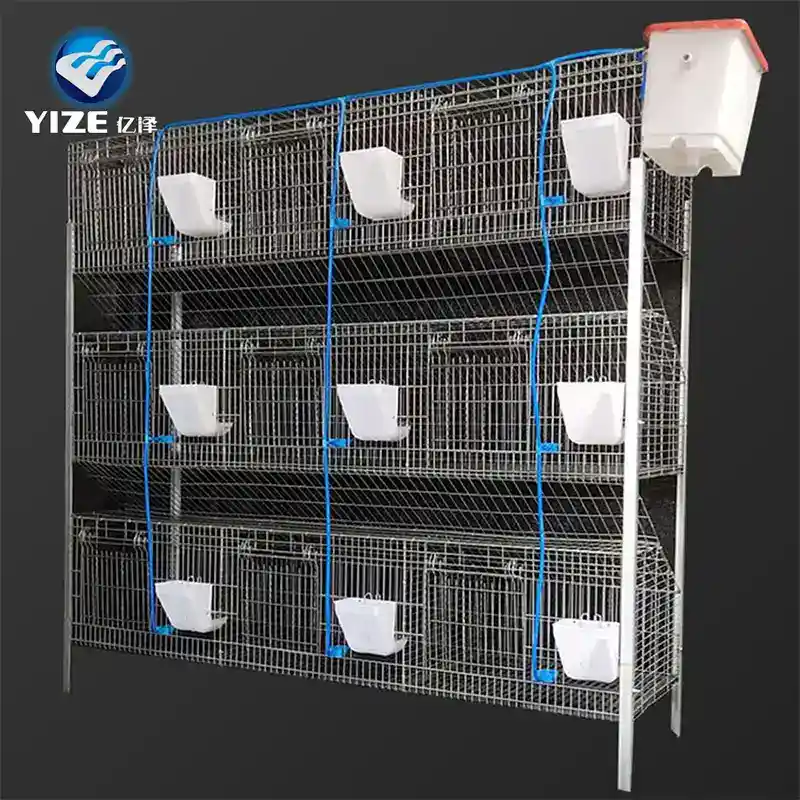layer house in poultry
Nov . 24, 2024 06:44 Back to list
layer house in poultry
Layer House in Poultry Farming An Overview
In the realm of poultry farming, the term layer house refers to the specialized housing system designed for raising laying hens. These facilities play a crucial role in maximizing egg production while ensuring the health and welfare of the birds. As the demand for eggs continues to grow globally, the design and management of layer houses have evolved significantly over the years, incorporating innovative technologies and best practices.
The Structure of Layer Houses
Layer houses can vary in design, but they generally share common features aimed at optimizing the environment for layers. These structures are typically spacious, well-ventilated, and equipped with adequate lighting to promote egg production. The interior is often divided into multiple sections, which can help manage different flock age groups or genetics.
One popular design is the ‘cage-free’ layer house, where hens are allowed to roam freely within a confined space. This setting mimics a more natural environment, allowing hens to exhibit natural behaviors such as nesting and foraging. Conversely, traditional caged systems confine hens in individual cages, often resulting in increased egg production efficiency and reduced feed costs. However, these systems have come under scrutiny for animal welfare concerns.
Environmental Controls
Maintaining a conducive environment inside a layer house is critical for ensuring optimal health and productivity of the hens. Temperature control is essential; layers thrive in a range of 18-24°C (64-75°F). Modern layer houses are equipped with ventilation systems that allow for the regulation of both temperature and humidity. Effective ventilation reduces the risk of respiratory diseases, which can have devastating effects on flock health.
Lighting is another critical component in layer houses. Layers are sensitive to light, and proper lighting regimes can significantly influence their laying patterns. Most producers utilize artificial lighting systems that simulate natural daylight cycles, thereby enhancing egg production rates. A common practice is to provide 14-16 hours of light per day to encourage optimal laying frequency.
layer house in poultry

Feeding and Nutrition
The nutritional needs of laying hens differ significantly from those of other poultry types, such as broilers. Layers require a diet rich in calcium, protein, and essential vitamins and minerals to support egg production and maintain health. Modern feeding programs are designed to deliver balanced rations tailored to the specific phase of production the hens are in, whether they are pullets preparing to lay or fully mature layers.
The use of automatic feeding systems allows for precise control over feed delivery, ensuring that birds receive the right amount of feed at the right times. This efficiency not only minimizes waste but also supports uniform growth and egg-laying patterns among the flock.
Waste Management
Efficient waste management is another cornerstone of successful layer house operation. The droppings and residual feed can accumulate quickly, leading to hygiene issues and attracting pests. Many modern layer houses incorporate waste management systems, such as manure belts or deep litter systems, designed to facilitate the removal and processing of waste products.
Effective manure management not only helps maintain sanitary conditions within the housing environment but also presents opportunities for recycling nutrients back into the farm. Properly composted manure can be used as a natural fertilizer, promoting sustainability in poultry farming.
Conclusion
In summary, layer houses are a vital aspect of poultry farming, specifically designed to meet the unique needs of laying hens. By focusing on structural design, environmental controls, nutrition, and waste management, producers can create optimal conditions for egg production while ensuring the health and welfare of their flocks. With ongoing advancements in poultry technology and an increasing emphasis on sustainable practices, the poultry industry is poised to meet the rising global demand for eggs while addressing concerns about animal welfare and environmental impact. The evolution of layer house practices will continue to be integral as the industry seeks to balance productivity with ethical standards in poultry farming.
-
Hot Sale 24 & 18 Door Rabbit Cages - Premium Breeding Solutions
NewsJul.25,2025
-
Automatic Feeding Line System Pan Feeder Nipple Drinker - Anping County Yize Metal Products Co., Ltd.
NewsJul.21,2025
-
Automatic Feeding Line System Pan Feeder Nipple Drinker - Anping County Yize Metal Products Co., Ltd.
NewsJul.21,2025
-
Automatic Feeding Line System - Anping Yize | Precision & Nipple
NewsJul.21,2025
-
Automatic Feeding Line System - Anping Yize | Precision & Nipple
NewsJul.21,2025
-
Automatic Feeding Line System-Anping County Yize Metal Products Co., Ltd.|Efficient Feed Distribution&Customized Animal Farming Solutions
NewsJul.21,2025






